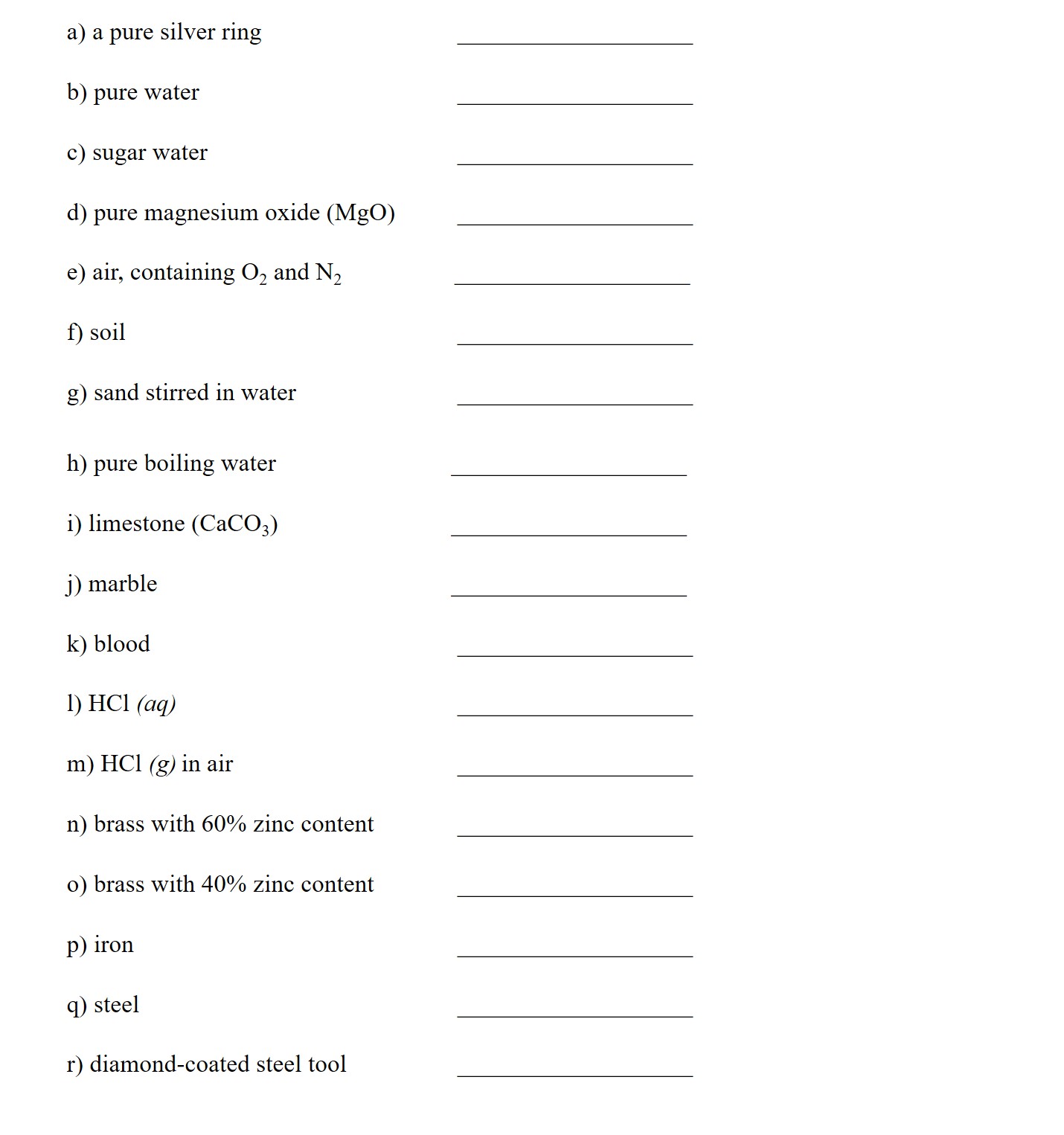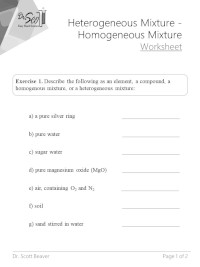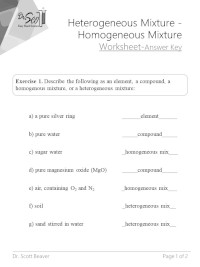
About heterogeneous mixture - homogeneous mixture worksheet
The heterogeneous mixture – homogeneous mixture worksheet with answer key is below. The worksheet gives common examples of mixtures, in addition to some pure, un-mixed substances. Learn how to classify these examples of mixtures below.
Download the Heterogeneous Mixture - Homogeneous Mixture Worksheet
Download and print the black and white pdf. It’s 2 printer-friendly pages. There’s an answer key too in the other pdf file.
What is a heterogeneous mixture?
Heterogeneous definition
One heterogeneous mixture definition is when substances are not completely mixed all the way down to the molecular level. To the naked eye, or perhaps with a microscope, you would be able to see patches of one substance dispersed among patches of another substance. Typically, the mixed substances appear as different states, or phases, of matter.
Heterogeneous mixture examples
An example or a heterogeneous mixture is the atmosphere on a rainy day. The rainy atmosphere is a mixture of the air, which is a gas, with liquid rain droplets. There are patches of dense liquid water falling down through the less dense air. It’s an obviously heterogeneous mixture because there are two states, or phases of matter: liquid and gas.
Importantly, on a rainy day, visibility is limited. We can see through air, because sunlight passes unobstructed through the air. But liquid raindrops bend, scatter, disperse, and block sunlight so that it does not pass through the rainy atmosphere.
The vast majority of substances on planet Earth are heterogeneous mixtures.There are a variety of common heterogeneous mixture examples below.
What is a homogeneous mixture?
Homogeneous definition
Homogeneous mixture examples
We have to use our understanding of chemistry to identify a homogeneous mixture. Fortunately, there are really only 3 homogeneous mixture examples. It’s good to know these, and then assume that all other cases would be heterogeneous mixtures.
Here are the 3 homogeneous mixture examples:
1. Dissolving something into a liquid makes a homogenous solution.
2. Gasses always mix homogeneously.
3. Alloys are homogeneous mixtures of metals.
Dissolving
Homogeneous mixture examples include dissolving things like salt, sugar, or food coloring into water. These are called aqueous solutions, denoted (aq), in which water acts as a solvent. When something dissolves, it is broken down completely to the molecular level. Note that we can see through a homogeneous solution. There may be color, such as when dissolving food coloring in water, yet the light will pass because there are no large obstructions to block the light.
Homogeneous solutions don’t have to involve water. Two oils, such as olive oil and coconut oil, would also mix homogeneously.
Gases
Alloys
Common heterogeneous mixture examples
Precipitation reactions and suspensions
Oil and water
Soap, oil, and water
Solid powders

Steel
Pure substances: Compounds and Elements
Exercise 1.
Describe the following as an element, a compound, a homogenous mixture, or a heterogeneous mixture:




